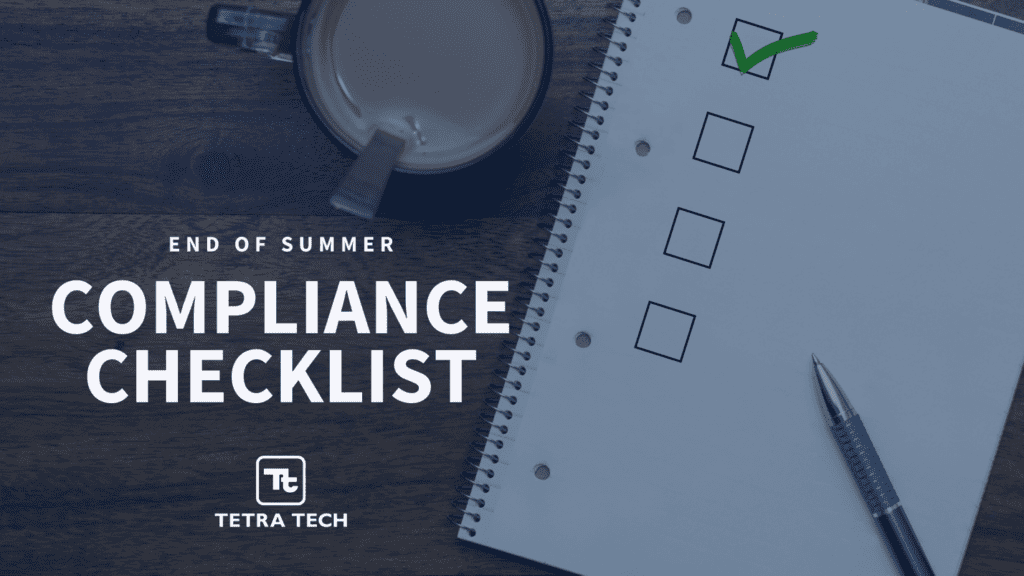Compliance should not be treated as an administrative burden undertaken as regulatory deadlines loom. Rather, successful programs hinge on risk management, clear oversight of suppliers for cost savings and efficiency, and preparation for any future disruptions. While your overall program and strategy should not be set up as checking boxes off a list, it is ideal to take moments now and again to gauge and optimize your program against a professional product compliance checklist.
Last year threw unprecedented disruption into many industries. This year new regulatory requirements have been introduced that will have long-lasting impacts. And now, regulations around the world are being held to higher standards and enforcement. As the end of the year approaches, this is an ideal time to reassess your compliance program and adjust as needed.
We will help guide you with this end-of-summer product compliance checklist. Let’s get started.
Item 1: Audit Regulatory Requirements Ahead
Remaining up-to-date with regulatory requirements that affect your industry and your business is a daunting task. Yet, it is vital to keeping your products on the market.
Each industry faces its own unique set of regulatory challenges, but one thing remains constant — these are continuously changing. For the main industries we serve, here are the biggest regulatory updates to-date of which to be aware and prepared, if not already taking action.
AUTOMOTIVE
- EU REACH Updates
- Newly Formed UK REACH
- WFD SCIP Database
- IMDS REC 019 Deactivation
- Integrating SCIP and IMDS
AEROSPACE AND DEFENSE
- EU REACH Updates
- Newly Formed UK REACH
- WFD SCIP Database
- REACH Authorizations in both EU and UK
- TSCA
- Department of Defense Mandates
COMMERCIAL VEHICLES
- EU REACH Updates
- Newly Formed UK REACH
- WFD SCIP Database
- Databases for Full Material Disclosures
ELECTRONICS
- EU REACH Updates
- Newly Formed UK REACH
- WFD SCIP Database
- RoHS EU 2015/863 Directive
- Conflict Minerals CMRT Updates
- WEEE
MEDICAL DEVICES
- EU MDR Replacing Medical Device Directive (MDD)
- European Data on Medical Devices (EUDAMED) Database
- EU/UK REACH
- RoHS EU 2015/863 Directive
- WFD SCIP Database Requirements
Item 2: Analyze and Score Data Quality
There is more product data needed and available than ever before. Yet, this makes high-quality data a large challenge. Data quality issues left unchecked have led to some notorious issues for major companies around the globe. It is vital you maintain reliable and quality data from your supply chain. This means strong communication with suppliers and a keen eye during data quality reviews.
Start by reaching out to survey your suppliers and communicate about the data requirements and needs ahead. Also be clear about your long-term data objectives and management plan. The data your suppliers send you must be reviewed carefully, otherwise issues can surprise you in the future.
Then make the data work for you for the long-run. Set yourself up with a full materials declaration (FMD) and the right database to store, manage and update data with ease and accuracy.
Item 3: Assess Compliance Software and Plan for Updates
It has been a large challenge for companies to keep up with the rapid development of technology. Not only are requirements around the world changing, but software solutions continue to evolve.
IMDS 13.0 has recently been released with many new features to help improve reporting and meet new requirements, such as with the SCIP Database. There are also a few key changes in the way electronics data can be reported with the phaseout of Recommendation 019.
Keep a pulse on the software you use and continue to assess whether it is the right solution for you and your needs — and if you are using it to its full potential.
Item 4: Equip Your Inhouse Compliance Team
Achieving global product compliance doesn’t happen by simply checking an item off a list. It takes expertise, tenacity and regular monitoring. Having subject matter experts for the requirements and tools of your program is crucial to long-term success.
We offer a variety of online regulatory product compliance training programs for different professional skill levels. Our courses can be accessed anytime, from anywhere with internet access. Our expert instructors provide guided, hands-on direction and quizzes to test proficiency. With successful completion, students receive professional certification.
Explore our offerings here, and reach out to us with any custom needs and further questions as you prepare to meet end-of-year regulatory requirements with confidence.






